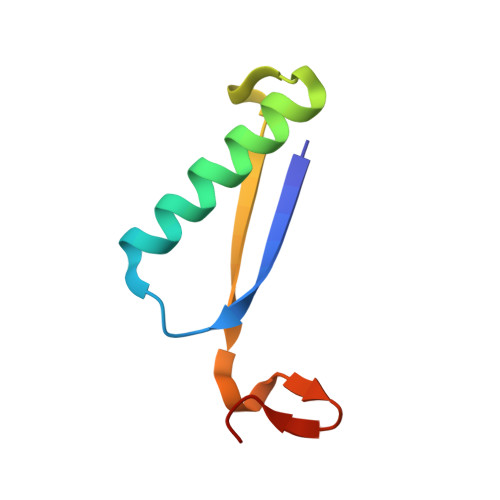Inactivation of 4-Oxalocrotonate Tautomerase by 5-Halo-2-hydroxy-2,4-pentadienoates.
Stack, T.M.M., Li, W., Johnson, W.H., Zhang, Y.J., Whitman, C.P.(2018) Biochemistry 57: 1012-1021
- PubMed: 29303557
- DOI: https://doi.org/10.1021/acs.biochem.7b00899
- Primary Citation of Related Structures:
5TIG, 6BGN - PubMed Abstract:
5-Halo-2-hydroxy-2,4-pentadienoates (5-halo-HPDs) are reportedly generated in the bacterial catabolism of halogenated aromatic hydrocarbons by the meta-fission pathway. The 5-halo-HPDs, where the halogen can be bromide, chloride, or fluoride, result in the irreversible inactivation of 4-oxalocrotonate tautomerase (4-OT), which precedes the enzyme that generates them. The loss of activity is due to the covalent modification of the nucleophilic amino-terminal proline. Mass spectral and crystallographic analysis of the modified enzymes indicates that inactivation of 4-OT by 5-chloro- and 5-bromo-2-hydroxy-2,4-pentadienoate follows a mechanism different from that for the inactivation of 4-OT by 5-fluoro-2-hydroxy-2,4-pentadienoate. The 5-chloro and 5-bromo derivatives undergo 4-OT-catalyzed tautomerization to their respective α,β-unsaturated ketones followed by attack at C5 (by the prolyl nitrogen) with concomitant loss of the halide. For the 5-fluoro species, the presence of a small amount of the α,β-unsaturated ketone could result in a Michael addition of the prolyl nitrogen to C4 followed by protonation at C3. The fluoride is not eliminated. These observations suggest that the inactivation of 4-OT by a downstream metabolite could hamper the efficacy of the pathway, which is the first time that such a bottleneck has been reported for the meta-fission pathway.
Organizational Affiliation:
Department of Molecular Biosciences, The University of Texas at Austin , Austin, Texas 78712, United States.

















